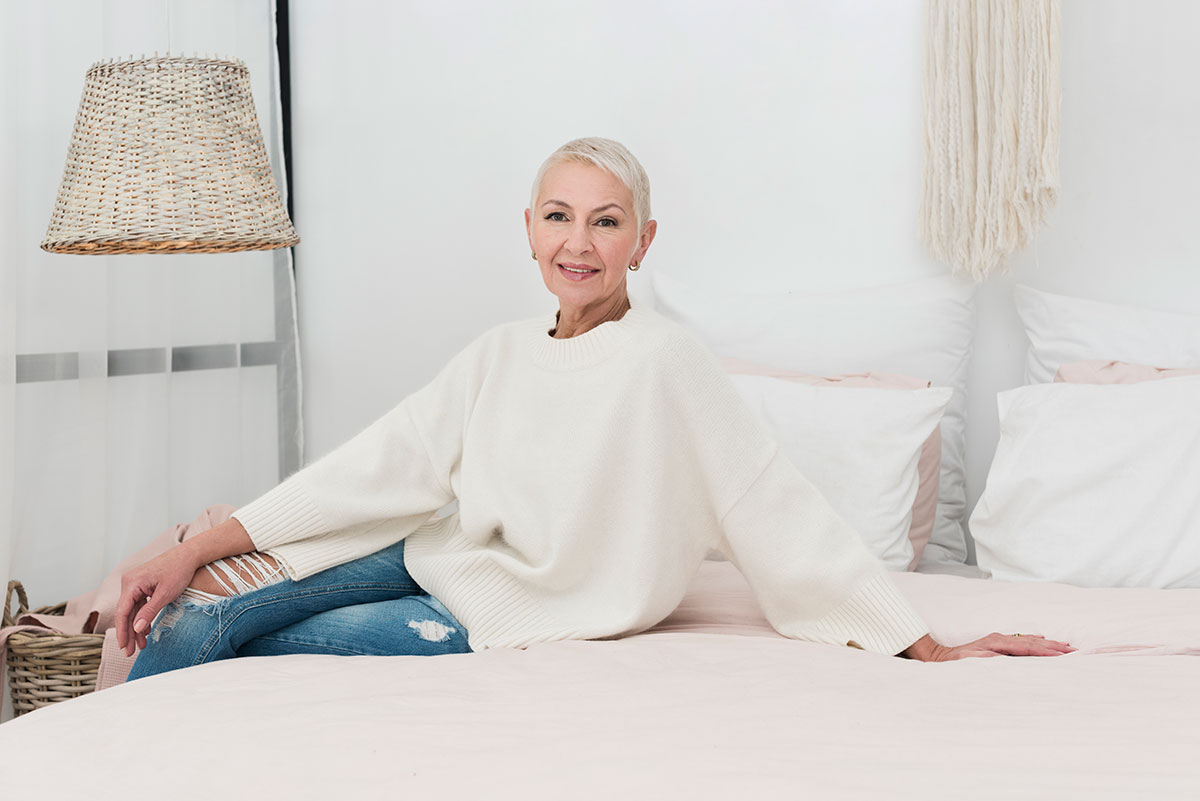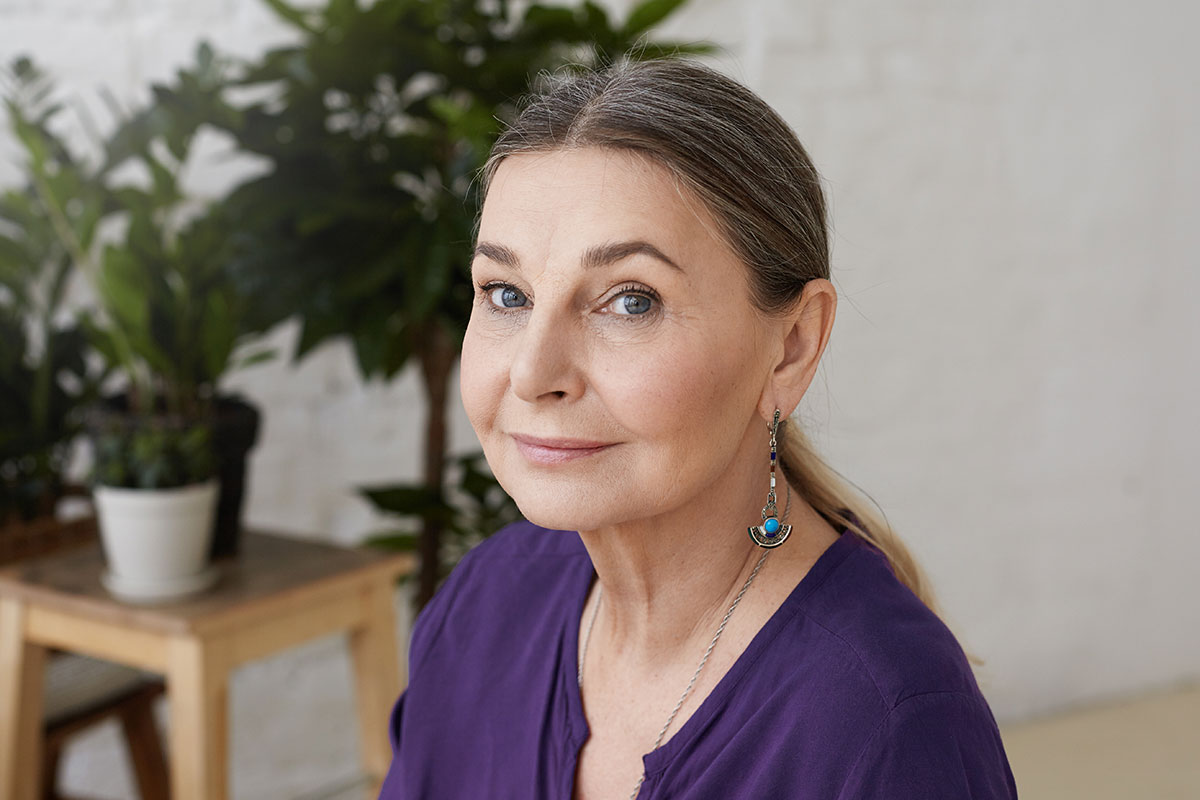
HGH Therapy for Women
Numerous hormone levels decline as you age, most especially – human growth hormone. You might be surprised when you learn how HGH therapy for women can transform your life.
The chemical known as somatotropin (growth hormone, GH) is often referred to as your “master hormone.” The reason is simple – it performs more functions than any other hormone in the body. When your growth hormone levels are too low, GH receptors do not receive the necessary signals to carry out their functions, and you have some form of physiological breakdown.
We often discuss the importance of HGH therapy for female use, but, of course, males can also benefit from hormone replacement therapy. Everyone needs HGH to maintain their immune systems, metabolism, cell regeneration, libido, brain functions, and more.
Just as estrogen therapy replaces lost estrogen levels during menopause, HGH replenishes growth hormone levels for GH deficient women. In fact, many females report that HGH for women over 30 dealing with signs of menopause causes their hot flashes and night sweats to disappear without the need for supplemental estrogen.
When do women need HGH therapy?
Growth hormone levels are highest during puberty when they stimulate the attainment of final adult height and physical growth. By the time most women reach age twenty, GH production levels off. Later, towards the end of the twenties, a slow and steady decline begins. You will not notice any changes at this time. It is too soon in the process for a decrease in growth hormone to impact your body to the point where you need HGH therapy for women.
Many women never even have any issues with growth hormone deficiency. As with menopause, the body is set up to adjust naturally to hormonal shifts. Unfortunately, there are times when HGH for women over 40 can be beneficial. We do not often see many females with problems at this age. However, if your body is not adjusting well, and you start showing signs of GH decline, treatment can reverse your symptoms and restore your sense of well-being.
Our doctors more often prescribe HGH for women over 50 because that is typically a time when many females notice the changes associated with menopause. You may have accepted your gray hair and wrinkles as a natural sign of aging. Muscle aches, joint pains, and weight gain are natural, or so you thought. No, they are all signs of low growth hormone levels.
Before you begin estrogen therapy, contact a hormone specialist to undergo comprehensive hormone testing. These blood tests will show the doctor precisely which hormone or hormone levels are in decline and require treatment. Yes, estrogen therapy may help reduce hot flashes, but wouldn’t you rather have a treatment that reverses all your symptoms?

When it comes to HGH for women over 60, no age is too old to begin treatment. Some people do not experience any signs of decline until they are that age or even older. Whenever you notice symptoms, that is the time to act.
Growth Hormone Deficiency in Women
Although some may associate growth hormone deficiencies with children caused by genetic conditions, adults can and often do develop deficiencies over time due to trauma, illness, injury, or lifestyle factors such as low activity levels or poor diet. Women can experience growth hormone deficiency for a number of reasons, including:
- head trauma;
- radiation therapies for cancer;
- poor sleep (HGH is primarily released during sleep);
- conditions affecting the hypothalamic-pituitary-adrenal axis (HPA axis);
- autoimmune disease.
HGH deficiency generally triggers several symptomatic clues that might include:
- loss of energy;
- muscle and/or bone density loss (critical in aging women);
- high LDL cholesterol;
- low sexual libido.
Growth Hormone Declines As Ladies Age
The clinical evidence is clear that, from mid-life moving forward, HGH levels consistently decrease. Women over 60, following the onset of menopause, are most susceptible to age-related HGH deficiencies.
HGH and falling estrogen: The menopause connection. As women age, a variety of hormonal changes occur – most notably, lowered estrogen which, in turn, leads to lower HGH levels.
Menopause typically occurs in a woman’s mid-40s. The process is characterized by the cessation of estrogen and progesterone production – the two main female sex hormones – by the ovaries. As a result, a hormonal cascade begins that can ultimately cause a drop in HGH levels due to complex physiological feedback loops.
Growth hormone and declining IGF-1 in the feminine body. Declines in endogenous HGH also produce deficiencies of IGF-1, another hormone crucial for women’s health. Insulin-like growth factor 1 (IGF-1) is produced by the liver. It is closely linked to HGH because they share similar biological roles and often work together. Moreover, HGH triggers the release of IGF-1 by the liver; the greater the supply of HGH in the blood, the more IGF-1 is released. IGF-1 levels, therefore, are directly tied to circulating human growth hormone levels in ladies.
When HGH levels are restored to normal following therapy, we see a consistent concomitant rise in IGF-1 levels. As a team, HGH and IGF-1 work alongside one another in women’s bodies to:
- regulate metabolism;
- promote optimal insulin response;
- prevent the development of metabolic disorders such as diabetes;
- stimulate muscle growth;
- fortify bones (important for aging women to prevent osteoporosis);
- promote healthy, youthful skin;
- foster apoptosis (programmed cell death).
What benefits can women expect from HGH therapy?
As a woman, you know how hectic your life can be. You may work full time and then return home at night to children who need help with their schoolwork or have to be shuttled to extracurricular activities. If you are like many adults today, you are part of the sandwich generation also caring for elderly parents or grandparents. By turning to HGH therapy for women, you will reap benefits that can help you deal with everything on your packed-full plate.
How is HGH good for women – what benefits will you receive?
The boxes below show you the many benefits you can expect from HGH therapy.
Face
- reduced wrinkles and cellulite;
- thicker, tighter skin;
- improved collagen production;
- less skin sagging;
- diminished age spots.
Hair and nails
- diminished age spots;
- better hair growth;
- thicker, fuller hair;
- possible hair color return;
- less brittle nails.
Energy
- increased energy;
- longer endurance and stamina;
- deeper, more restful sleep.
General health
- stronger immunity;
- enhanced bone density;
- faster recovery from illness;
- fewer colds;
- sharper night vision;
- improved eyesight.

Mood
- reduced depression;
- happier mood;
- better outlook;
- less stress and anxiety;
- more focus;
- increased drive and motivation.
Mind
- enhanced cognitive functions;
- sharper memory;
- better concentration;
- better productivity.
Sex
- better sexual arousal and desire;
- improved vaginal lubrication;
- better concentration;
- more pleasurable sex.
How do women start HGH therapy?
Women are naturally more open to seeking medical care than men. Around menopausal age, the first instinct may be to turn to your gynecologist. However, that is not the best idea. Many gynecologists also focus their practices on obstetrics, dealing more with pregnancy than with aging. If you contact your doctor and are advised to begin estrogen or estrogen and progestin treatment without undergoing blood analysis that also measures IGF-1 (for growth hormone deficiency) and testosterone, please do not go any further.
It is crucial that you have a comprehensive hormone panel blood analysis to determine the proper treatment. When it comes to HGH, female use can be more beneficial than turning blindly to estrogen therapy.
Studies have shown that women nearing menopausal age are better served by working with an experienced adult hormone replacement therapy specialist. The HRT doctor understands the delicate relationship between hormone levels, and how to increase or decrease those that are out of balance.
Find us here if you need to ask any additional questions for free.
